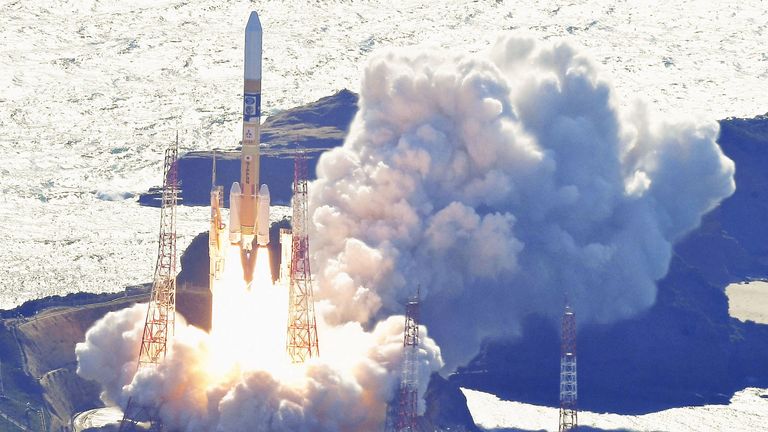Japan hopes it is about to join an exclusive club of just four other nations that have successfully executed a “soft” landing on the moon.
Its garden shed-sized Smart Lander for Investigating Moon, or SLIM, isn’t the biggest, or most ambitious robotic mission to our satellite – but it’s bidding to be the most precise when it attempts landing today.
Japan’s space agency, JAXA, knows it won’t be easy.
The moon gained new craters in the last six months thanks to a Russian, then Japanese robotic mission failing to stick the landing.
Only yesterday an American moon probe crashed back to Earth after failing to make it to the moon.
The final phase of the landing, as the moon’s gravity grabs hold of SLIM as it descends to the surface, “is expected to be a breathless, numbing 20 minutes of terror”, said Kushiki Kenji, sub-project manager of the SLIM mission.
Nicknamed “moon sniper” by JAXA, SLIM is aiming to touch down in an area about the same size as Trafalgar Square.
That might not sound impressive – but NASA’s Apollo landers targeted areas several kilometres across – even recent robot missions have lacked the ability to choose their landing zone and manoeuvre to it with much accuracy.
SLIM uses technology and experience gained from JAXA’s daredevil mission Hayabusa2 which successfully landed on asteroid Ryugu in 2018.
It’s loaded with images of the moon’s surface from various lunar orbiting spacecraft to give it highly accurate data to select its landing site and precision radar navigation to help find it.
JAXA says a successful landing takes moon missions from the era of “landing where we can” to “landing where we want”.
Japan lacks the financial and rocket-launching heft of the US, China, the former USSR and now India which have all made successful soft moon landings.
But it’s hoping a host of new technologies on SLIM, from lightweight ceramic rocket thrusters to computer vision algorithms, will give it a competitive edge in lightweight precision.
It’s also deploying two highly experimental “rovers”.
A jack-in-the-box type probe is designed to bunny hop across the lunar surface. A spherical robot that morphs into a scuttling rover equipped with a tiny camera will attempt to photograph the landing site.
It was designed by Japanese toy company Tomy which created Transformer toys.
As more countries become interested in heading to the moon in search of resources like water that could be used for future bases on its barren surface – being able to land the latest, lightweight technologies with precision could make Japan a key player in the conquest of the moon.
